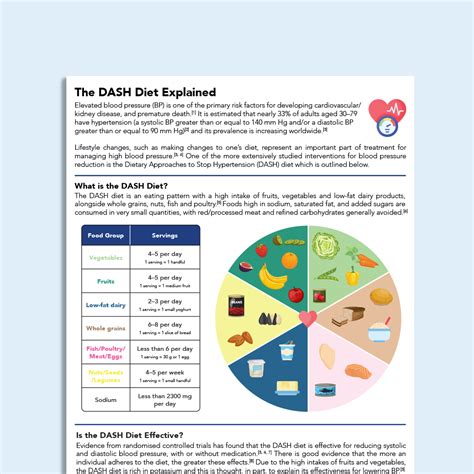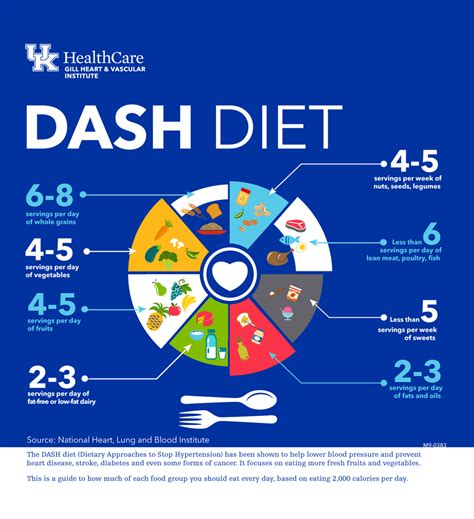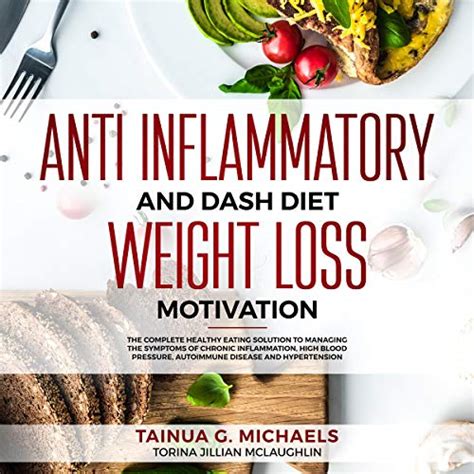Intro
Discover the DASH Diet, a balanced eating plan promoting weight loss, lowering blood pressure, and improving overall health through wholesome foods, portion control, and sodium reduction.
The world of diets can be overwhelming, with countless options available, each promising to deliver the best results. However, not all diets are created equal, and some stand out for their scientific backing and sustainable approach. One such diet is the DASH diet, which has been consistently ranked as one of the best diets for overall health and wellness. In this article, we will delve into the details of the DASH diet, exploring its benefits, working mechanisms, and practical tips for implementation.
The DASH diet, which stands for Dietary Approaches to Stop Hypertension, was initially developed to help lower blood pressure in individuals with hypertension. However, its benefits extend far beyond blood pressure management, and it has become a popular choice for those seeking a balanced and sustainable eating plan. The diet focuses on whole, unprocessed foods, emphasizing fruits, vegetables, whole grains, lean proteins, and low-fat dairy products. By making these simple yet profound changes to one's eating habits, individuals can experience significant improvements in their overall health and wellbeing.
The DASH diet is not a quick-fix solution but rather a long-term approach to healthy eating. It encourages individuals to adopt a balanced and varied diet, rich in essential nutrients and low in unhealthy fats, sugars, and sodium. By doing so, the diet helps to mitigate the risk of chronic diseases, such as heart disease, stroke, and diabetes. Moreover, the DASH diet has been shown to promote weight loss, improve cognitive function, and even reduce the risk of certain types of cancer. With its numerous benefits and sustainable approach, it's no wonder that the DASH diet has become a favorite among health experts and individuals alike.
Understanding the DASH Diet

To fully appreciate the DASH diet, it's essential to understand its core principles and guidelines. The diet is based on a simple yet effective approach, focusing on whole, unprocessed foods and limiting unhealthy ingredients. The key components of the DASH diet include:
- Fruits: 5-6 servings per day
- Vegetables: 5-6 servings per day
- Whole grains: 6-8 servings per day
- Lean proteins: 2-3 servings per day
- Low-fat dairy products: 2-3 servings per day
- Healthy fats: 2-3 servings per day
- Sodium: limited to 2,300 milligrams per day
Benefits of the DASH Diet
The benefits of the DASH diet are numerous and well-documented. Some of the most significant advantages of this eating plan include: * Lower blood pressure: The DASH diet has been shown to significantly lower blood pressure in individuals with hypertension. * Weight loss: The diet promotes weight loss and maintenance, reducing the risk of obesity-related diseases. * Improved heart health: The DASH diet helps to lower cholesterol levels and reduce the risk of heart disease. * Reduced risk of chronic diseases: The diet has been shown to reduce the risk of stroke, diabetes, and certain types of cancer. * Improved cognitive function: The DASH diet may help to improve cognitive function and reduce the risk of dementia.Implementing the DASH Diet

Implementing the DASH diet is relatively straightforward, requiring only a few simple changes to one's eating habits. Here are some practical tips to get you started:
- Start by assessing your current diet and identifying areas for improvement.
- Gradually introduce more whole, unprocessed foods into your diet, such as fruits, vegetables, whole grains, and lean proteins.
- Limit your intake of unhealthy ingredients, such as added sugars, saturated fats, and sodium.
- Keep track of your food intake and progress, using a food diary or mobile app to monitor your eating habits.
- Seek support from friends, family, or a registered dietitian to help you stay on track.
Common Challenges and Solutions
While the DASH diet is relatively easy to follow, some individuals may encounter challenges along the way. Here are some common obstacles and solutions: * Time constraints: Try meal prepping or cooking in bulk to save time during the week. * Limited access to healthy foods: Explore local farmers' markets or online grocery stores to increase access to whole, unprocessed foods. * Cravings for unhealthy foods: Find healthy alternatives to your favorite treats, such as fruits or nuts instead of sugary snacks. * Difficulty staying motivated: Share your goals with a friend or family member and ask for their support, or join a weight loss community to connect with like-minded individuals.Meal Planning and Recipes

Meal planning is a crucial aspect of the DASH diet, helping to ensure that you stay on track and meet your nutritional needs. Here are some tips for meal planning and some delicious recipe ideas:
- Plan your meals in advance, using a meal planning template or app to stay organized.
- Focus on whole, unprocessed foods, such as fruits, vegetables, whole grains, and lean proteins.
- Incorporate a variety of colors and textures into your meals to ensure a broad range of nutrients.
- Try new recipes and flavors to keep your diet interesting and prevent boredom.
Some delicious and healthy recipe ideas include:
- Grilled chicken with roasted vegetables and quinoa
- Baked salmon with sweet potato and green beans
- Lentil soup with whole grain bread and a side salad
- Stir-fry with lean beef, mixed vegetables, and brown rice
Snacking and Portion Control
Snacking and portion control are essential aspects of the DASH diet, helping to regulate calorie intake and prevent overeating. Here are some tips for healthy snacking and portion control: * Choose nutrient-dense snacks, such as fruits, nuts, or carrot sticks with hummus. * Limit your intake of unhealthy snacks, such as chips or sugary treats. * Use a food scale or measuring cups to measure your food portions and prevent overeating. * Eat slowly and mindfully, savoring your food and stopping when you feel satisfied.Staying Motivated and Overcoming Obstacles

Staying motivated and overcoming obstacles is crucial to the success of the DASH diet. Here are some tips for staying on track:
- Set realistic goals and celebrate your achievements along the way.
- Find a support system, such as a friend or family member, to help you stay motivated.
- Reward yourself for your progress, using non-food rewards such as a massage or a new outfit.
- Be patient and persistent, remembering that developing healthy habits takes time and effort.
Seeking Support and Resources
Seeking support and resources is an essential aspect of the DASH diet, helping to ensure that you have the tools and guidance you need to succeed. Here are some resources to consider: * Registered dietitians or nutritionists: These professionals can provide personalized guidance and support to help you implement the DASH diet. * Online communities: Joining online forums or social media groups can connect you with like-minded individuals and provide a sense of community and support. * Mobile apps: Utilize mobile apps, such as MyFitnessPal or Lose It!, to track your food intake and monitor your progress. * Cookbooks and recipe websites: Explore cookbooks and recipe websites, such as the DASH diet website, to find healthy and delicious recipe ideas.Conclusion and Next Steps

In conclusion, the DASH diet is a well-rounded and sustainable eating plan that offers numerous benefits for overall health and wellbeing. By following the principles and guidelines outlined in this article, individuals can experience significant improvements in their blood pressure, weight, and overall health. Remember to stay motivated, seek support and resources, and be patient and persistent as you work towards developing healthy habits.
We invite you to share your thoughts and experiences with the DASH diet in the comments below. Have you tried the DASH diet, and if so, what were your results? What challenges did you face, and how did you overcome them? Your feedback and insights can help others who are considering the DASH diet, and we appreciate your input.
What is the DASH diet, and how does it work?
+The DASH diet is a balanced eating plan that focuses on whole, unprocessed foods and limits unhealthy ingredients. It was initially developed to help lower blood pressure in individuals with hypertension but has since been shown to offer numerous benefits for overall health and wellbeing.
What are the key components of the DASH diet?
+The key components of the DASH diet include fruits, vegetables, whole grains, lean proteins, low-fat dairy products, and healthy fats. The diet also limits sodium intake to 2,300 milligrams per day.
How can I implement the DASH diet in my daily life?
+To implement the DASH diet, start by assessing your current diet and identifying areas for improvement. Gradually introduce more whole, unprocessed foods into your diet, and limit your intake of unhealthy ingredients. Keep track of your progress, and seek support from friends, family, or a registered dietitian as needed.
What are some common challenges and solutions for the DASH diet?
+Common challenges for the DASH diet include time constraints, limited access to healthy foods, and cravings for unhealthy foods. Solutions include meal prepping, exploring local farmers' markets, and finding healthy alternatives to favorite treats.
Are there any resources or support systems available for the DASH diet?
+Yes, there are numerous resources and support systems available for the DASH diet, including registered dietitians, online communities, mobile apps, and cookbooks. These resources can provide guidance, support, and motivation as you work towards developing healthy habits.
